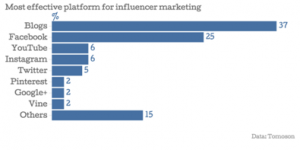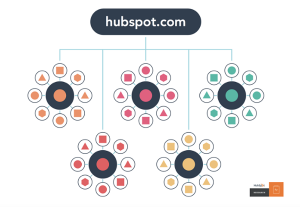If you are a marketer, you know that search engine optimization (SEO) is extraordinarily important. The more optimized your blog posts are, the more visibility you gain and the bigger your social media footprint becomes.
Ultimately, the more your posts show up in search engine results when people enter relevant keywords, the more successful your content marketing efforts will be.
Unfortunately, one of the challenges you will face is ensuring that your content meets Google’s often cryptic search engine algorithm updates.
Many bloggers are operating under standards that no longer apply, rather than matching their content marketing practices to current direction from the search engines. It’s no wonder so many bloggers struggle with SEO today.
Fortunately, there are some simple things that you can do to help ensure that your SEO efforts are rewarded with enhanced search engine results page placement. Keep reading to learn more.
Optimize Using Long Tail Keywords
By now, you probably know that it’s a bad idea to use keywords over and over again in a blog post. Search engine algorithms have been configured to identify this and to penalize content when this happens.
This goes back to the days when it was common for people to write or even automatically generate posts packed full of whatever keyword was popular.
These posts contained little or no useful information. They were usually created simply to get people to click on links, or worse, to steal their personal and financial information. It’s now common knowledge that keyword stuffing does not provide a single tangible benefit.
So, given all of the above, how do you use keywords the right way? The idea is to provide readers with great content, while also using keywords in a way that gets the attention of search engine spiders.
Consider focusing on a couple of long tail keywords. Not only are they better for SEO these days, but they also help you attract people who will be the most interested in your content. This can lead to more natural links, leads, and conversions.
The first thing you want to do is a bit of keyword research. I recommend you consider keywords that are trending upward because they are newsworthy, that are commonly used in your industry, and that are performing well for your competitors.
Once you identify these keywords, it’s time to pick out a couple that will be incorporated into your blog post. Just remember that you want to use long tail keywords to most effectively target the right audience/niche and improve your chances of getting good SEO rankings within that space.
For example, nearly everybody might use the keyword phrase, ‘Christmas gifts’. Your goal is to drill down a bit further. For example:
- Christmas Gifts For Retirees
- Sexy Christmas Gifts For Your Spouse
- Christmas Gifts For Star Wars Fans
- Christmas Gifts For Wine Enthusiasts
- Religious Christmas Gifts
Where to Use Keywords
Where you place keywords matters a great deal if you are going to be disciplined and limit yourself to the number of keywords you plan to use. When Google sends out search engine crawlers to index web content, those bots focus on very specific components of the web pages they crawl, including page titles, headers, image alt-text, and URLs.
Pay especially detailed attention to how you structure the page title, because it is what shows up as the linkable text in search results. You’ll want the entire keyword phrase to appear whenever possible. This helps to ensure that people will click on your SERP listing rather than one of the others on the page.
As far as the body of your blog posts go, that’s a bit different. It is okay to use keywords here, but they should be a natural part of your content. It should not appear as if you have forced the term in the text just for ranking purposes. If you overstuff it into the content, search engine algorithms will penalize you, and you will likely turn off your readers.
Meta Descriptions
Your meta descriptions tell both readers and search engines exactly what to expect from your posts. They should be clear and compelling. This helps to ensure that only those who are truly interested click into your posts, and it helps to prevent a high bounce rate, which is very bad for SEO.
Be Mobile Friendly
I cannot emphasize this point enough: A blog that is not mobile friendly will fail to perform well with respect to SEO.
Key point in 2017: Google’s search engine algorithm push mobile friendly sites to the top of the list. In fact, if you try searching for some very common terms such as the following, you likely won’t find non-mobile friendly websites showing on the first page:
- Delivery Restaurants Near Me
- Movie Ticket Prices
- Urgent Care Locations
- Grocery Stores in Five Miles
- Dry Cleaning
If you are routing your mobile customers to a separate URL, you should rethink that practice. When compared to responsive or mobile first design, it performs more poorly across the board.
Your Content Counts
No tips, tricks, or techniques will work unless your content itself is top notch. Great content answers questions, solves problems, entertains, or provides insights. It should be easy to read, prolific, and trustworthy.
If you cannot meet the demand for your content while still maintaining high standards of quality, it might be time to get some help writing your copy.
Just be careful when you seek out help in this area. Check out this list of best writing services online. You should be able to find a content writing service that will help you reach your goals.
Make Your Images Work For SEO
Images are great for SEO, but search engines don’t simply see that you have images and then improve your positioning. They look for features that indicate your images are a valuable part of your content. To do this, your images should meet two requirements.
The first is that their size and dimensions should be optimized so that page loading and image clarity are not an issue. Then, it is important for the text around your image to be optimized as well. Be certain that your image tags, captions, even file names content text that is relevant to your content.
Conclusion
Hopefully, you will be able to apply the tips above to your own blog posts. If you can, you will begin to notice that your posts begin to show up for relevant keywords more frequently.
Digital & Social Articles on Business 2 Community(73)







